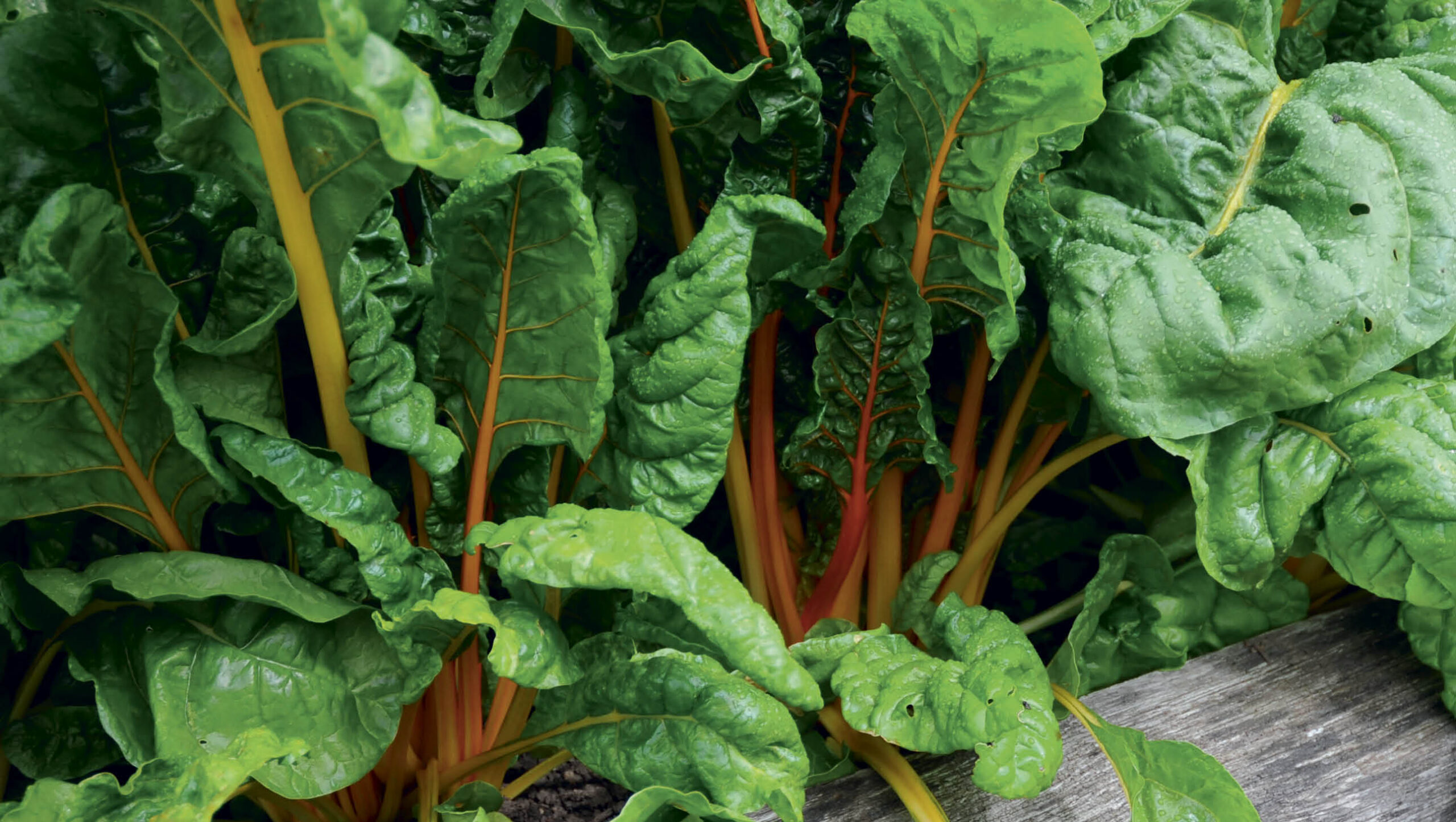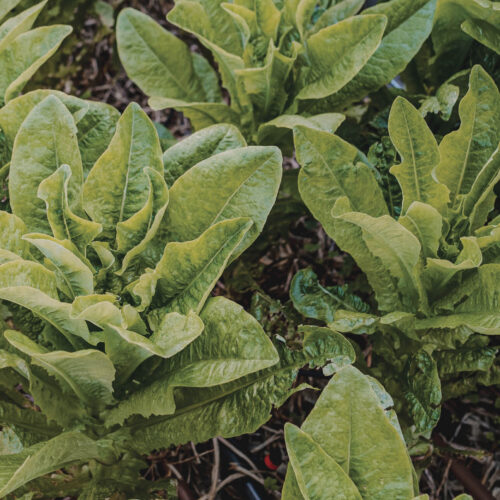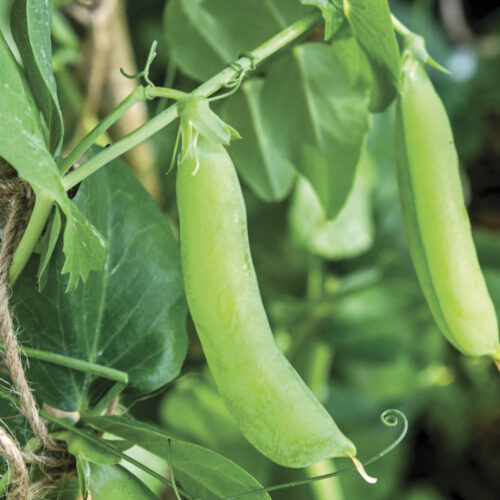Silverbeet and friends
2023-06-06T03:46:24+10:00
Lush, prodigious, multicoloured, nutritious – Helen Cushing reveals the rich tapestry of silverbeet (or chard by any other name).
Vegetables can be beautiful as well as tasty and with silverbeet and friends, you can take your pick of colour, too. A quick look at seed sellers’ websites and you will find silverbeet with names such as ‘Golden Sunrise’, ‘Magenta Sunset’, ‘Orange Rib’ and ‘Ruby Red’. A fabulous range of colours that you can use to combine with favourite flowers or accent a corner of the garden, as well as being able to eat nutritious and delicious leaves and stems full of important vitamins, minerals and phytochemicals.
What’s in a name?
In Australia silverbeet is sometimes referred to as spinach, which isn’t wrong as they are both in the Amaranthaceae family. But technically, spinach is a completely different species, and is often called English spinach to help avoid confusion.
While silverbeet has big, rumpled dark green leaves with strong, white stalks and veins, English spinach is much smaller, softer and entirely green. Commercially, English spinach is harvested roots and all due to its fast growth cycle. Also sold as ‘baby spinach’, the young leaves are used in salad mixes. Silverbeet can also be grown as microgreens and as baby leaves that can be used in salads.
The identity of silverbeet versus rainbow chard also needs clarifying. Botanically these two have the same name: Beta vulgaris. The best known silverbeet is green with white stalks, while rainbow chard is generally seen as being green with brightly coloured stalks and veins. Sometimes it’s known as Swiss chard. In the US and other countries, silverbeet is simply known as chard. You might notice this in American recipes.
Perpetual spinach
Perpetual or perennial spinach is yet another plant, with pale-green stalks and veins, rather than white. The leaves are smoother and a little paler, and the flavour is sweeter, more similar to spinach. It is longer lasting in the ground and less likely to go to seed, but technically it’s not perennial. It does self-sow more prolifically, so once you have grown it you are never without this leafy green in the garden. Botanically perpetual spinach is in the Cicla Group and is probably the progenitor of all the other plants named Beta vulgaris. As well as silverbeet (Flavescens Group), these include beetroot (Conditiva Group), sugar beet (Altissima Group) and manglewurzel (Crassa Group).
Planning
Healthy silverbeet plants provide an abundance of large leaves throughout the year. Two good-sized plants are plenty for one or two people, unless you live on spanakopita (Greek spinach pie)! If you’re feeding a family, bear in mind that children have a reputation for NOT loving this vegetable.
Whatever the size of your tribe, it’s always worth popping in a couple of extras as back-up in case a plant fails to thrive or your child’s palate develops.
Spacing plants well means they have plenty of room for roots to spread. This makes them hardier, which is particularly important in summer. In the absence of competition, silverbeet roots will sprawl to over 120cm in circumference and depth. This gives the plant enormous power to forage nutrients and water.For optimal growth, allow 30–45cm between plants and 60cm between rows. When seeds are sown in situ, the thinnings provide an early harvest.
Silverbeet can be planted at almost any time of year in warm-temperate climates. However, germination is not so good in the heat so avoid planting mid-summer. Also, although some ‘cold tolerant’ varieties will handle light frost, others won’t, so check before buying and provide protection if needed, or wait until frost has passed to plant. From the subtropics north in frost-free areas, you can plant throughout winter. Silverbeet is biennial, which means it begins flowering in its second season. In the right climate, spring-planted silverbeet will feed you right through the following winter.
Easy to grow
Its identity may be complex, but growing silverbeet is not. The growing advice here applies to all the varieties listed in the table and more.
Silverbeet’s strong, deep root system enables it to tolerate a wide range of climates once established. In temperate zones (see page 60 for our climate zone map), silverbeet thrives in full sun, particularly in the cooler months. In summer and year-round in hotter areas the large, lush leaves appreciate some afternoon shade. Heat tolerance can be increased by watering well and regularly. In humid conditions, silverbeet is more prone to a fungal leaf spotting disease, although resistance varies.
Propagation and planting
Soil should always be moist but not too wet when you work it. Cover the soil with a 5cm layer of organic matter such as compost, worm castings or well-rotted manure (or a mix of these) and then loosely fork through. Blood and bone or pelletised chicken manure are high in nitrogen and can be added to promote leaf growth.
Silverbeet seeds are quite large so sowing seed direct is relatively easy but prepare the seed bed to a fine tilth then plant seed around 12mm deep. Seeds will germinate in a bit under two weeks, and once they do, water regularly and protect from snails and slugs.
The seeds are poly-embryonic, which means more than one seedling grows from each seed. If you buy a punnet of seedlings you’ll notice that the baby plants are in clusters. You can leave them like that or thin as you prefer. If planting seedlings, just make sure they are tucked in firmly and watered with a liquid seaweed immediately.
Self-sowing
I confess that I haven’t planted silverbeet for at least 15 years! That’s because all my current silverbeet is self-sown. I let the plants go to seed, which looks messy and takes up space, but as soon as I spot little seedlings I encourage them by weeding around them then, watering and feeding. I am never without silverbeet. The catch is, not all silverbeet self-sows readily and it needs to be an heirloom variety. See the chart for varieties if you want to be a lazy gardener like me.
Problems and care
Silverbeet has few problems. Use an organic mulch to protect soil from sun and wind, hold moisture and provide food for soil life. Leaf spotting disease is a fungus that causes small, brown-rimmed holes in the leaves. The leaves can still be used and the plant keeps growing, so if you can put up with it, don’t worry. Sometimes stem-rot occurs as the plants age. If you have a succession of plantings then this is no big deal either. In humid regions where fungal diseases are more likely, grow disease-resistant varieties.
Side dress with complete organic fertiliser every 6–8 weeks. And use dilute liquid seaweed fertiliser regularly for optimal results and strength.
Protect small seedlings from snails by sprinkling coffee grinds or crushed eggshells around them. Alternatively, put copper collars on short pieces of downpipe, around individual seedlings until they get bigger. Another no-fuss solution is iron-based snail baits that will eventually break down into a soil nutrient.
Harvest and kitchen
Once plants are established, harvest the outer leaves by pulling them away rather than cutting. The plant will continue producing leaves, which makes them a great pick-and-eat veg.
Silverbeet is packed with important nutrients, minerals and dietary fibre necessary for a healthy bowel. Phytochemicals found in the leaves help protect your eyes and reduce the possibility of cataracts and macular degeneration.
All plants in the Amaranthaceae family, including silverbeet and spinach, contain varying amounts of oxalic acids. In high concentrations these are poisonous but in small amounts are important for some body functions. The message with plants containing low oxalic acid is to not eat them in large amounts every day for weeks on end. Regular, moderate consumption is fine, except if you have kidney problems or have had kidney stones, in which case, eat less of them. Cooking the leaves reduces the oxalic acid content.
This article first appeared in our Winter 2020 issue (OG 118). You will find all sorts of practical solutions for organic growing in the magazine — all you have to do is subscribe!






